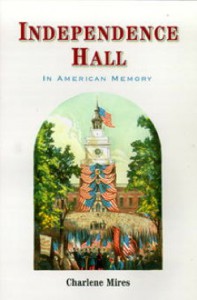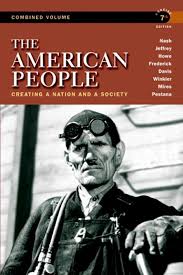As a scholar trained broadly in nineteenth and twentieth century United States history and material culture, I focus my research on the intersecting themes of place, identity, and memory as constructed across time and in multiple dimensions (individual, community, region, nation, and world). My work is rooted in the following fields: (1) material culture studies, particularly landscapes, built environment, and public space; (2) the study of public memory, a subject of interdisciplinary interest among historians, sociologists, anthropologists and other scholars; (3) urban history, especially built environment and issues of public memory in urban contexts; and (4) public history, which involves the communication of history by, with, and for the public, especially in settings such as historic sites and museums.
Books
 Independence Hall in American Memory (University of Pennsylvania Press, 2002; paperback edition 2013). Companion website: https://www.independencehall-americanmemory.com/
Independence Hall in American Memory (University of Pennsylvania Press, 2002; paperback edition 2013). Companion website: https://www.independencehall-americanmemory.com/
Co-winner of the Philadelphia Athenaeum Literary Award, 2004; related article winner of the G. Wesley Johnson Award for outstanding article published in The Public Historian in 1999.
Independence Hall in American Memory is a study of three processes of construction – of a building, of memory, and of the nation – from the 1720s through the 1990s. Arguing that buildings are important contributors to the construction of public memory, the book develops a theoretical framework for understanding buildings, especially historic landmarks, as stages for the construction of memory through architecture, public use, and historic preservation. The book demonstrates through the case of Independence Hall that buildings are repositories of memory, as one generation encapsulates a perception of the past and communicates it to the future, and they are filters, allowing some memories to be preserved while others are obscured. As they facilitate remembering and forgetting, buildings with national significance also contribute to the construction of national identity. At Independence Hall, the memory of the Declaration of Independence and Constitution has been protected above all else, despite the building’s existence in a major American city for nearly three centuries. This book is the first to view the long, multicultural history of this significant landmark in U.S. history.
This work contributes to the field of material culture by demonstrating analysis of a single artifact (Independence Hall) over time, rather than taking the more customary and limited approach of focusing primarily on an artifact’s creation and original use. My work contributes to the study of public memory by delving deeply into the role of artifacts, especially buildings, in the process of remembering and forgetting aspects of the past. The work contributes to the field of public history by revealing ways in which the history of a presumably well-known public landmark has been distorted. The book demonstrates the more powerful interpretation that can be developed through a broader, deeper investigation than is typical of many historic sites.
 Capital of the World: The Race to Host the United Nations (NYU Press, 2013; paperback edition 2015).
Capital of the World: The Race to Host the United Nations (NYU Press, 2013; paperback edition 2015).
- Google E-Book Excerpt: Absolutely Not New York: Finding a Home for the United Nations (NYU Press, 2014).
Capital of the World broadens my investigation of place and identity to national and international scale. This book is a study of the idea of creating a “capital of the world” in 1944-46 and the little-known booster competition among American cities and towns to earn the honor of becoming the site for the new United Nations headquarters. Through archival research in numerous local, state, and national repositories, as well as the United Nations Archives, this work expanded the known scope of this competition from about fifty competitors to 248 localities in the United States. The world capital hopefuls included large cities such as Chicago and San Francisco but also such seemingly isolated places as Tuskahoma, Oklahoma, and the Black Hills of South Dakota. Their booster campaigns offer wide-ranging documentation of relationships among local, national, and global identities at a pivotal moment in history, as well as an opportunity to examine the process of place-making for the imagined “capital of the world” and the eventual United Nations headquarters in New York City.
With its focus on the mid-twentieth century, Capital of the World contributes historical context to such contemporary concerns as globalization and place-marketing. Scholarly interest in globalization has focused predominantly on the period since 1980, but the world capital competition illuminates the ways in which local and global factors were enmeshed earlier in the twentieth century. This book finds individuals and communities reaching outward through local identities to forge connections with world affairs at the end of World War II. As such, the world capital campaigns constitute a concrete example of the “progressive sense of place” theorized by British geographer Doreen Massey, who has argued that local interests should not be dismissed as merely parochial. The publicity campaigns aimed at the United Nations also present a previously unexamined opportunity to fill a gap in scholarship on civic boosterism, which has focused predominantly on the nineteenth century in the American West. Capital of the World finds continuities between nineteenth-century boosterism, early twentieth-century tourism promotion, and civic boosterism at the end of World War II. With this established, it also becomes apparent that the intensive place-marketing efforts that are often associated with late twentieth-century globalization are best understood as continuities rather than a sharp departure from the past. Capital of the World also engages with scholarship on time and space, adding to the work of Stephen Kern (whose The Culture of Time and Space concludes in 1918). In addition, the book adds to histories of the United Nations, which have ignored or minimized the headquarters site controversy despite its serious implications for exposing decision-making weaknesses in the organization during its earliest days.
Work in Progress
Textbook
 The American People: Creating a Nation and a Society (Pearson). I am revisions co-editor for chapters covering the period 1877-1920 and author of the substantially new chapter on late nineteenth-century urbanization introduced in the 7th edition.
The American People: Creating a Nation and a Society (Pearson). I am revisions co-editor for chapters covering the period 1877-1920 and author of the substantially new chapter on late nineteenth-century urbanization introduced in the 7th edition.